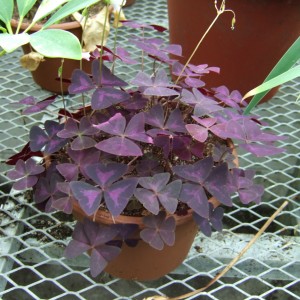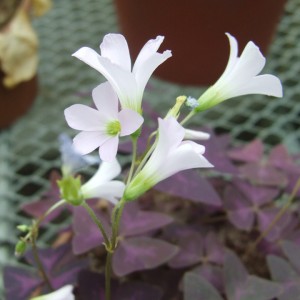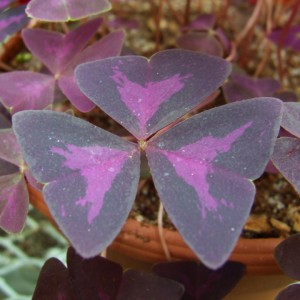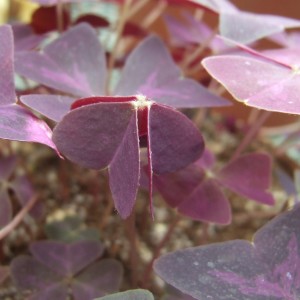Oxalis
The Oxalis genus
| Description |
Oxalis plants are a type of a group of plants called wood sorrels. Most oxalis plants have distinctive leaves divided into three leaflets, giving them the appearance of large clovers. The species represented on this page, Oxalis triangularis, is easily identified with its dark purple pigment and lighter, triangular pattern on each leaflet. The purple pigment is called anthocyanin. |
|---|---|
| Area |
Oxalis is a very widespread genus. It can be found in almost all temperate and tropical areas worldwide. Brazil and South Africa have the greatest number of naturally occuring oxalis species. O. triangularis, the species in our greenhouse, is native to Brazil. |
| Special Characteristics |
Most oxalises will fold their leaflets down in colder temperatures and/or at nighttime. However, to reduce heat damage and conserve energy, some will fold their leaves downward in response to high heat and direct sunlight. This phenomenon can occur in response to touch on the petiole as well. Scroll down to see a picture of a folded oxalis. |
| Reproduction |
Some Oxalis species reproduce from bulbs. The bulbs remain in the soil when the main part of the plant is removed, so it can become an invasive, hard-to-eriadicate nusciance in horticulture and landscaping. |
| Trivia |
Oxalis’s name comes from the Greek word “oxis”, meaning “acid”. The leaves contain high levels of of the toxin oxalic acid C2O2(OH)2, which can pose danger to humans and animals if eaten in large quantities. The tuber of O. tuberosa, called “oca”, is a staple food crop in the southern Andes. It has a tolerance for high altitude and poor soils, making it an ideal crop for cultivation in the area. O. tetraphylla is popularly sold as “four leaf clover” because of its four-sectioned green leaves. However, it is not related to clover at all. |



